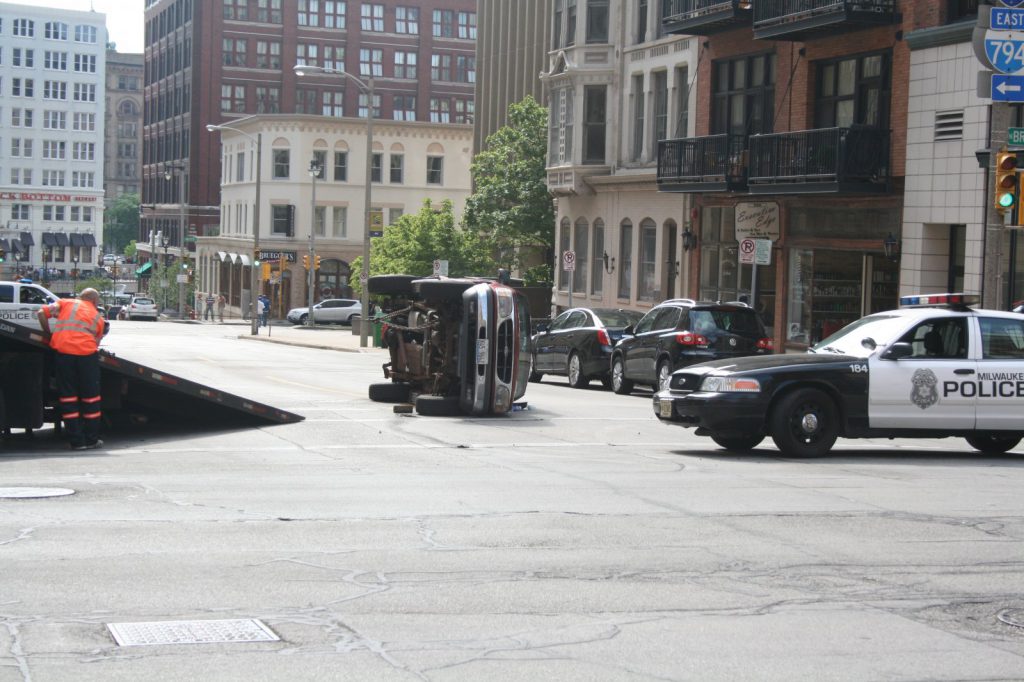Milwaukee Planning To Eliminate Traffic Crash Deaths
City, led by Mayor Cavalier Johnson, adopts "Vision Zero" policy
City of Milwaukee officials have a vision of eliminating traffic deaths on city streets.
Known as “Vision Zero,” the effort builds on the city’s 2018 adoption of a Complete Streets policy.
The Vision Zero idea originated in Sweden in the 1990s and has proliferated in the United States in the past decade.
“The key thing where you have had success in cities is where you have an engaged mayor,” said Alderman Michael Murphy when the Public Safety & Health Committee considered the policy on June 9. He said he introduced the resolution at the request of Mayor Cavalier Johnson.
Johnson called for the policy on Dec. 21 when he released his STAND (street design, traffic enforcement, accountability, and neighborhood engagement while demanding progress) plan near Midtown Center on W. Capitol Dr.
On Thursday, Johnson was to return to the site of his December announcement to sign the policy into law.
“We often think of traffic deaths as inevitable,” said Kate Riordan, Department of Public Works planner and mayor’s office safe streets coordinator, in presenting the plan to the committee. “But in Vision Zero we saw traffic deaths as preventable… no one should have to die to move around the city.”
Johnson is tasking his cabinet members to come up with three strategies to reduce reckless driving and for defensive driving courses for city employees that drive regularly.
“Vision Zero recognizes that people will make mistakes, but those mistakes should not cost lives,” said Riordan.
The vision also includes a language component, calling collisions a “crash” instead of an “accident.”
According to Wisconsin Department of Transportation statistics, 87 people were killed in traffic fatalities in Milwaukee County in 2021 and 101 in 2020. Thirty-six fatalities have been reported in 2022.
The policy is backed by a number of community groups, including the Wisconsin Bike Fed, Sherman Park Community Association, Coalition for Safe Driving MKE and Bublr Bikes.
But comments from supporters at the committee demonstrate the difficulty of getting the policy right.
“We would really like a comprehensive approach to make sure the whole community is aware of Vision Zero,” said safe driving coalition member Angela Marion. She warned the council that the policy shouldn’t be rolled out too quickly otherwise people wouldn’t buy in.
“We need to take Vision Zero seriously, much more seriously than we are taking Complete Streets,” said Sherman Park Community Association vice president Jordan Morales.
The proposal is backed by Fire Chief Aaron Lipski and Police Chief Jeffrey Norman.
“My role in this as a fire chief is to identify hot spots,” said Lipski. “We are working backward from the absolute worst-case scenarios.” He praised the community involvement.
He noted that reckless driving requires an immediate solution, while Vision Zero is a long-term strategy.
“We understand that law enforcement is not the top of the pyramid for traffic safety. We are certainly part of it, but we understand there are other strategies that may be more impactful,” said Milwaukee Police Department chief of staff Nick DeSiato.
“DPW is extremely excited for Vision Zero to move forward,” said city engineer and acting DPW Commissioner Jerrel Kruschke. “We felt like a lot of the responsibility has fallen on the shoulders of DPW and we feel excited to have [all of the other departments] helping be a part of this.”
DPW is currently working on 16 street reconfiguration projects funded with American Rescue Plan Act funding. Nine of the projects are expected to be completed this summer. The department, with ARPA funding, is also working on a record number of resident-requested speed humps. The city could also lower its default speed limit to 20 miles per hour.
The resolution was sponsored by the entire council. It was unanimously approved Tuesday.
Political Contributions Tracker
Displaying political contributions between people mentioned in this story. Learn more.
Transportation
-
Congestion Pricing Cuts Air Pollution in New York City
 Dec 14th, 2025 by Jeff Wood
Dec 14th, 2025 by Jeff Wood
-
FTA Tells Milwaukee to Crack Down on Fare Evasion — Even Where Fares Don’t Exist
 Dec 12th, 2025 by Graham Kilmer
Dec 12th, 2025 by Graham Kilmer
-
Will GOGO’s Bus Service Ever Get Going?
 Dec 9th, 2025 by Jeramey Jannene
Dec 9th, 2025 by Jeramey Jannene






















